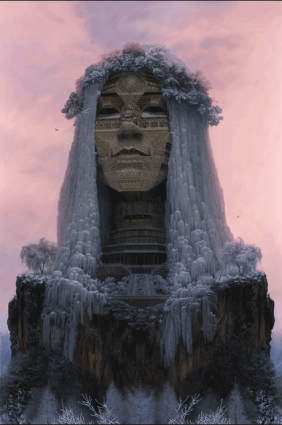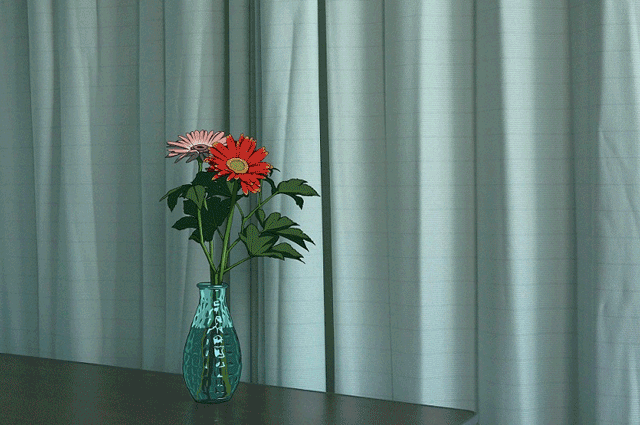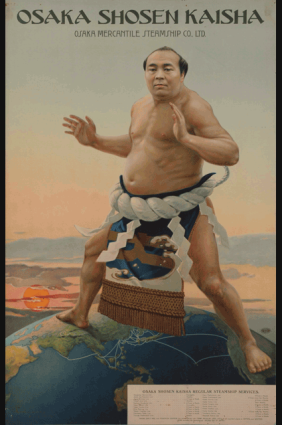This month’s Gallery Guide offers exhibitions looking inward, outward and beyond. Familiar places seem less recognizable and surreal scenes appear quite natural.
By Luca Eandi
HARA DOCUMENTS 10: Masaharu Sato—Tokyo Trace
The “Hara Documents” series was launched in 1992 to promote emerging artists. The tenth installment features Masaharu Sato’s newest work, “Tokyo Trace.” In it, Sato presents a number of vignettes of present-day Tokyo, which he reworks using a technique he calls “shadowing.”
This process that Sato developed is based on the meticulous tracing of actual video stills. He uses a camera to shoot ordinary scenes of people and landscapes and then augments them with a digital pen. His goal is to “get as close to the video image as possible by emphasizing nothing and leaving no trace of pen behind.” The immense time and labor, the repetitive tracing of prosaic scenes, the production of hundreds of frames that comprise the animation – this seemingly extraneous process is one that produces the subtle skewed reality that makes Sato’s work special. Viewers experience a momentary feeling of puzzlement, sensing something amiss in the apparently ordinary scene.
His 2014 work, titled “Calling,” created after the strife of living through the Great East Japan Earthquake and consecutive bouts of illness experienced by himself and another member of his family also makes up the exhibition, as well as newly-created two-dimensional art.
Hara Museum of Contemporary Art
Dates: January 23–May 8, 2016
Open: 11:00 am–5:00 pm, 11:00 am–8:00 pm on Wednesdays, closed Mondays (except March 21) and March 22, last admission 30 minutes before closing
Web: www.haramuseum.or.jp
VISIT JAPAN: Tourism Promotion in the 1920s and 1930s
It was reported in January that Japan nearly reached its goal of drawing 20 million visitors in 2015, a full five years ahead of the original 2020 target. Impressively, that figure almost quadruples the 5.2 million people that visited Japan when the current government-sponsored tourism campaign kicked off in 2003. A true feat, considering the country was closed to tourism until the late 1880s; therefore, Japan was relatively unaccustomed to promoting its attractions to the rest of the world until the early 20th century.
Now, ahead of the 2020 Olympics, The National Museum of Modern Art, Tokyo, is looking back at advertisements that were used to promote Japan in one of the country’s earliest promotional campaigns during the 1920s and ‘30s. This era saw improved modes of commercial aviation, encouraging leisure travel to Japan. The government had consciously spent the previous two decades bolstering its railway and hotel networks.
The exhibition features posters, pictorial magazines and travel brochures from the time. Designed by well-known names such as Hisui Sugiura, Yumeji Takehisa, Hatsusaburo Yoshida and Munetsugu Satomi, the posters involve motifs that include kimonos, sumo wrestlers, cherry blossoms and Mount Fuji – symbols now synonymous with the land.
The National Museum of Modern Art, Tokyo
Dates: January 9–February 28, 2016 | Open: 10:00 am–5:00 pm, 10:00 am–8:00 pm on Fridays, last admission 30 minutes before closing
Web: www.momat.go.jp
DU KUN—Revels of the Rock Gods

Temple of Heavenly Sounds, Oil on canvas, 210 x 140 cm, 2015, Image copyright of the artist; courtesy of the artist and Mizuma Art Gallery
As seen with the recent passing of David Bowie and Lemmy Kilmister of Motörhead, the magnitude of rock musicians can’t be underestimated. As soon as news of their deaths hit the Internet, fans gathered to mourn the loss and celebrate the music, while makeshift shrines sprang up in their honor. Undoubtedly, fans will make pilgrimages to cemeteries for years to come, revering their favorite musicians’ graves as hallowed mausoleums. This level of devotion can only be described as religious in scope.
Chinese artist Du Kun is captivated with music and rock stars. As a musician himself since his art school days, the Beijing and Tianjin-based painter is taken by the creation of music, the side effects of fame and the ethereal nature of revered musical superheroes. In his series, “Revels of the Rock Gods,” Chinese contemporary musicians take the form of temples, pagodas and other traditional Buddhist and Confucian structures, built into the sides of mountains and cliffs, amidst seas and waterfalls – divine structures overlooking sacred lands.
Du Kun paints the elements of earth, water, air and fire in mysterious atmospheres that create a mystic, misty air. Catch this exhibition at Mizuma Art Gallery early in the month, as it closes before Valentine’s Day.
Mizuma Art Gallery
Dates: January 13–February 13, 2016
Open: 11:00 am–7:00 pm, closed Sundays, Mondays and national holidays
Web: www.mizuma-art.co.jp
Main image: Bye bye come on, 2010, animation, loop, single-channel video, Masaharu Sato











